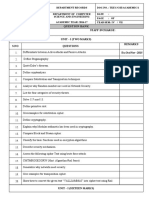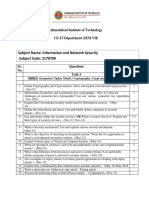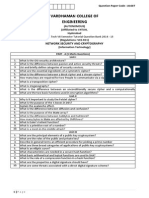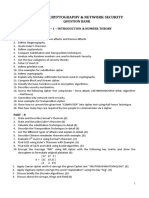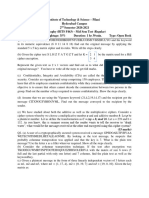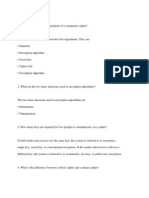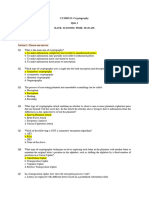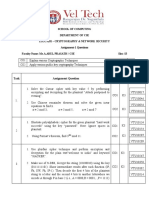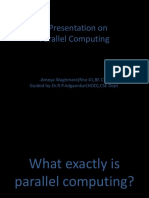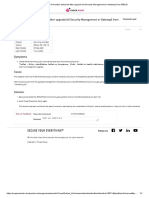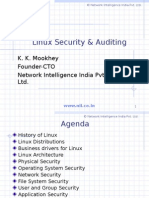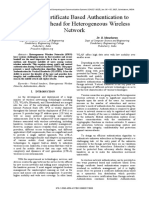0% found this document useful (0 votes)
243 views3 pagesCryptography & Network Security-TIT-701
This document is a 4 page exam for a cryptography and network security course. It contains 6 questions covering various topics in cryptography including:
1) Types of ciphers like mono-alphabetic, Caesar, and transposition ciphers.
2) Cryptanalysis techniques like differential cryptanalysis and security attacks.
3) Symmetric encryption algorithms like DES and Hill cipher.
4) Asymmetric encryption using the RSA algorithm.
5) Other topics like pseudorandom number generation, MACs, digital signatures, Kerberos, and X.509 certificates.
Uploaded by
aadrikaCopyright
© © All Rights Reserved
We take content rights seriously. If you suspect this is your content, claim it here.
Available Formats
Download as PDF, TXT or read online on Scribd
0% found this document useful (0 votes)
243 views3 pagesCryptography & Network Security-TIT-701
This document is a 4 page exam for a cryptography and network security course. It contains 6 questions covering various topics in cryptography including:
1) Types of ciphers like mono-alphabetic, Caesar, and transposition ciphers.
2) Cryptanalysis techniques like differential cryptanalysis and security attacks.
3) Symmetric encryption algorithms like DES and Hill cipher.
4) Asymmetric encryption using the RSA algorithm.
5) Other topics like pseudorandom number generation, MACs, digital signatures, Kerberos, and X.509 certificates.
Uploaded by
aadrikaCopyright
© © All Rights Reserved
We take content rights seriously. If you suspect this is your content, claim it here.
Available Formats
Download as PDF, TXT or read online on Scribd
/ 3









